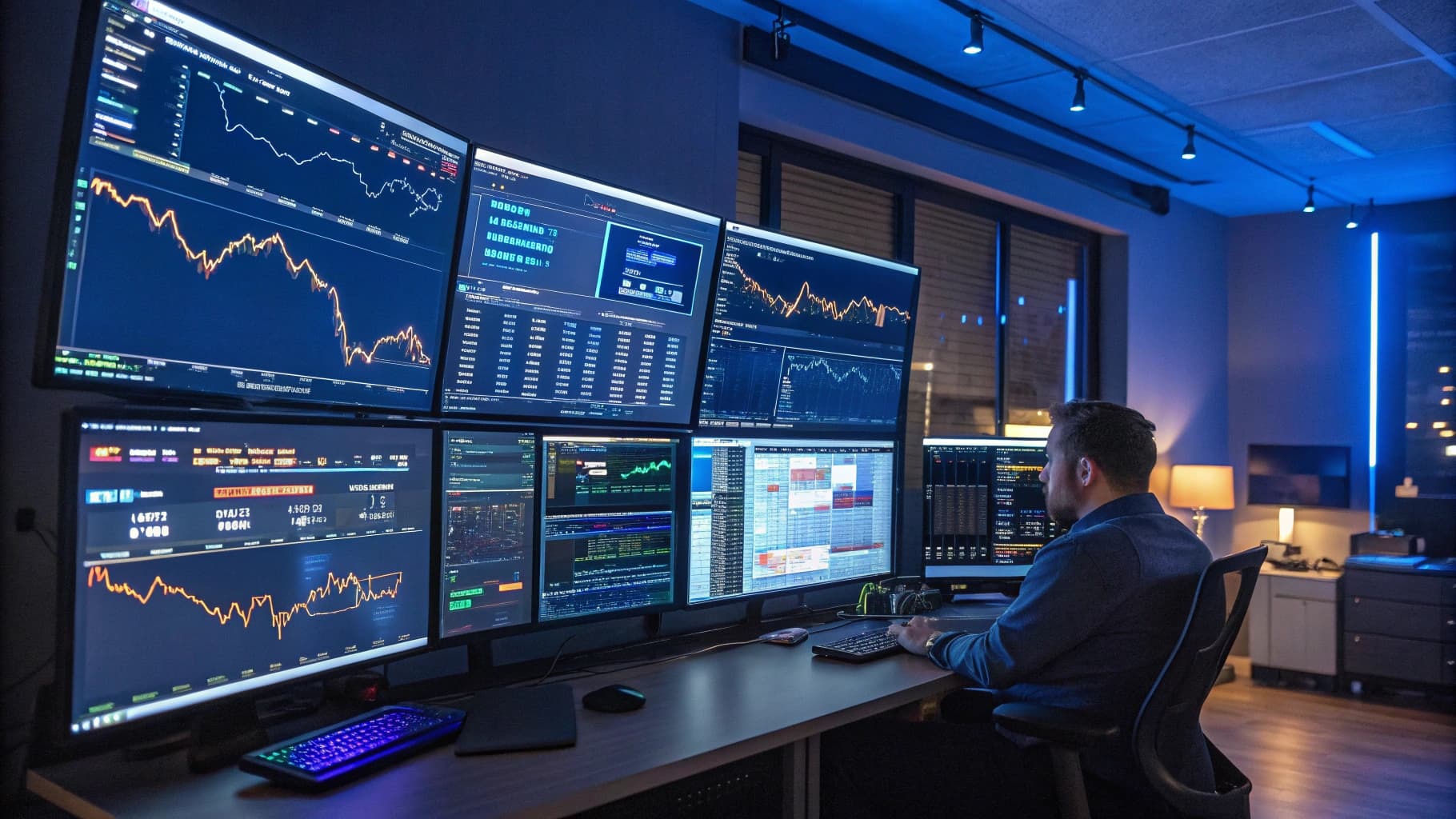In today’s fast-paced digital world, the way I work has evolved significantly, and so have the tools I use. The advent of multi-screen workspaces and ultra-wide monitors has transformed my approach to productivity, efficiency, and even comfort. As I delve into the benefits of these setups, I find myself contemplating how each option can enhance my workflow and overall experience.
The choice between a multi-screen workspace and an ultra-wide monitor is not merely a matter of preference; it’s about understanding how each setup aligns with my specific needs and work habits. The allure of multi-screen workspaces lies in their ability to provide a vast expanse of digital real estate. With multiple monitors, I can easily multitask, keeping various applications open simultaneously.
On the other hand, ultra-wide monitors offer a seamless experience with a single expansive screen that eliminates the bezels found in multi-monitor setups. As I explore these two options, I am eager to uncover the nuances that make each one unique and beneficial in its own right.
Productivity: Which Setup Enhances Efficiency and Workflow?
When it comes to productivity, I often find myself weighing the advantages of multi-screen workspaces against those of ultra-wide monitors. With multiple screens, I can dedicate each monitor to specific tasks or applications. For instance, I might keep my email open on one screen while working on a document on another.
This arrangement allows me to switch between tasks with minimal disruption, enhancing my workflow significantly. The ability to view multiple applications side by side without constantly minimizing or maximizing windows is a game-changer for my efficiency. Conversely, ultra-wide monitors present a compelling case for productivity as well.
The expansive screen real estate allows me to have multiple windows open side by side without the interruption of bezels. This uninterrupted view creates a more immersive experience, enabling me to focus on my work without distractions. Additionally, many ultra-wide monitors come equipped with features like picture-in-picture mode, which allows me to view content from different sources simultaneously.
This flexibility can be particularly beneficial during video conferences or when conducting research while taking notes.
Ergonomics: Comparing the Comfort and Health Benefits of Multi-Screen Workspaces and Ultra-Wide Monitors
Ergonomics plays a crucial role in my decision-making process when it comes to selecting a workspace setup. Comfort is paramount, especially during long hours of work. Multi-screen workspaces can sometimes lead to neck strain or discomfort if the monitors are not positioned correctly.
I have learned that proper alignment is essential; otherwise, I risk developing poor posture habits that could lead to long-term health issues. However, with careful arrangement and adjustable stands, I can create an ergonomic setup that minimizes strain. On the other hand, ultra-wide monitors offer a more streamlined approach to ergonomics.
With a single screen that spans a wide area, I can position it at an optimal height and distance without worrying about aligning multiple monitors. This simplicity can lead to better posture and reduced eye strain since I am not constantly shifting my gaze between different screens. Furthermore, many ultra-wide monitors come with features like blue light filters and flicker-free technology, which contribute to a healthier viewing experience over extended periods.
As I consider my options, the financial aspect cannot be overlooked. Multi-screen workspaces can vary significantly in cost depending on the number and type of monitors I choose. While it’s possible to find budget-friendly options, investing in high-quality displays can quickly add up.
Additionally, I must factor in the cost of monitor stands or mounts, cables, and potentially even a more powerful graphics card to support multiple displays effectively. In contrast, ultra-wide monitors often come with a higher upfront cost but can be more economical in the long run. With just one monitor to purchase, I save on additional accessories and setup costs associated with multiple screens.
Moreover, many ultra-wide monitors offer advanced features that enhance productivity and comfort, which can justify their price tag. Ultimately, my decision will hinge on balancing initial investment with long-term benefits and potential savings.
Flexibility: Examining the Versatility and Customization Options of Multi-Screen Workspaces and Ultra-Wide Monitors
Flexibility is another critical factor in my evaluation of multi-screen workspaces versus ultra-wide monitors. Multi-screen setups allow me to customize my workspace according to my specific needs. I can choose different monitor sizes or orientations based on the tasks at hand.
For instance, having one vertical monitor for coding or reading documents while keeping another horizontal for general tasks can optimize my workflow. Ultra-wide monitors also offer customization options but in a different way. Many models come with adjustable settings that allow me to split the screen into multiple sections or use picture-in-picture modes.
This versatility enables me to tailor my workspace according to my preferences without needing multiple physical screens. However, while ultra-wide monitors provide a single cohesive display, they may lack the physical separation that some users find beneficial for organizing their tasks.
Gaming and Entertainment: Evaluating the Immersive Experience of Multi-Screen Workspaces and Ultra-Wide Monitors
As someone who enjoys gaming and entertainment in addition to work, I find myself considering how each setup enhances my leisure activities. Multi-screen workspaces can create an immersive gaming experience by allowing me to dedicate one screen to gameplay while using another for chat applications or streaming services. This setup provides a dynamic environment where I can engage with friends or follow tutorials without interrupting my gaming session.
Ultra-wide monitors have gained popularity among gamers for their ability to deliver an expansive field of view that enhances immersion. The wide aspect ratio allows me to see more of the game world without needing to pan or shift my gaze excessively. Additionally, many ultra-wide monitors boast high refresh rates and low response times, which are crucial for competitive gaming.
The combination of stunning visuals and immersive gameplay makes ultra-wide monitors an appealing choice for entertainment enthusiasts like myself.
When it comes to technical performance, both multi-screen workspaces and ultra-wide monitors have their strengths and weaknesses. Multi-screen setups can offer diverse display options; however, achieving uniformity in color accuracy and resolution across different monitors can be challenging. If I choose monitors from different manufacturers or models, I may encounter discrepancies that affect my overall experience.
Ultra-wide monitors often provide superior display quality due to their single-panel design. Many models feature advanced technologies such as IPS panels that deliver vibrant colors and wide viewing angles. Additionally, ultra-wide monitors typically come with higher resolutions that enhance clarity and detail in both work-related tasks and entertainment experiences.
The seamless integration of these features makes ultra-wide monitors an attractive option for those who prioritize display quality.
Making an Informed Decision for Your Work Setup

In conclusion, choosing between a multi-screen workspace and an ultra-wide monitor ultimately depends on my individual needs and preferences. Each setup offers unique benefits that cater to different aspects of productivity, comfort, cost-effectiveness, flexibility, entertainment value, and technical performance. As I weigh these factors carefully, I realize that there is no one-size-fits-all solution; what works best for me may not be ideal for someone else.
As I embark on this journey of optimizing my workspace, I am reminded that the right setup can significantly impact my efficiency and overall well-being. Whether I opt for the expansive versatility of multi-screen workspaces or the immersive experience offered by ultra-wide monitors, making an informed decision will empower me to create an environment that fosters productivity and enjoyment in both work and play.
FAQs
What are multi-screen workspaces?
Multi-screen workspaces refer to a setup where multiple monitors are used to display different applications or content simultaneously. This allows users to have a larger digital workspace and multitask more efficiently.
What is an ultra-wide monitor?
An ultra-wide monitor is a single monitor with a wider aspect ratio than traditional monitors, typically with a 21:9 aspect ratio. This allows for a wider field of view and more screen real estate for multitasking.
What are the advantages of multi-screen workspaces?
Multi-screen workspaces allow users to have multiple applications or content visible at the same time, which can improve productivity and multitasking. It also provides a larger digital workspace for tasks such as video editing, graphic design, and data analysis.
What are the advantages of ultra-wide monitors?
Ultra-wide monitors provide a wider field of view and more screen real estate compared to traditional monitors, allowing for a more immersive viewing experience and improved multitasking. They also eliminate the need for multiple monitor setups, saving space and reducing cable clutter.
What are the potential drawbacks of multi-screen workspaces?
Multi-screen workspaces can require more desk space and may result in bezels interrupting the continuity of the display. Additionally, managing multiple monitors and windows can be more complex and may require additional hardware such as a multi-monitor stand.
What are the potential drawbacks of ultra-wide monitors?
Ultra-wide monitors may not be as customizable as multi-screen setups, as they provide a single, continuous display. Additionally, some ultra-wide monitors may have a lower pixel density compared to standard monitors, resulting in a less sharp image.
How do multi-screen workspaces and ultra-wide monitors compare in terms of performance?
The performance of multi-screen workspaces and ultra-wide monitors can vary depending on the specific use case and individual preferences. Some users may find that multi-screen setups offer more flexibility and customization, while others may prefer the simplicity and immersive experience of an ultra-wide monitor.

